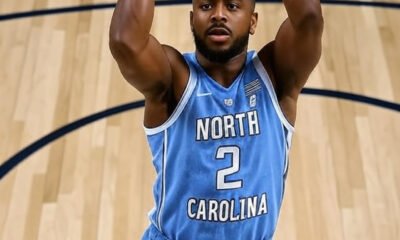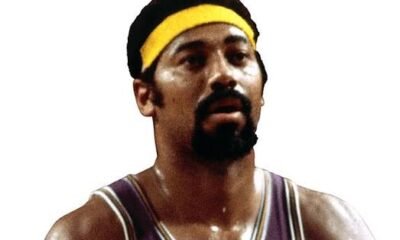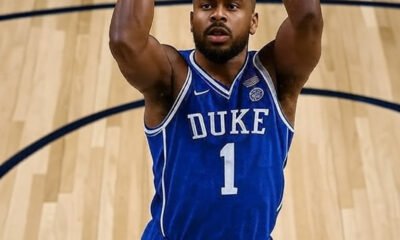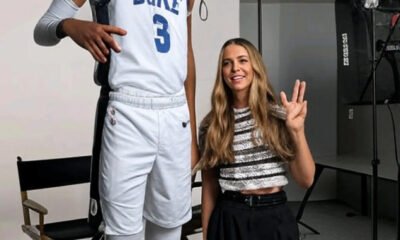Blog
Just In: Oklahoma Sooners softball just sealed up a $4 million deal with the No.1 player in America…
Just In: Oklahoma Sooners Softball Secures $4 Million Deal with Top-Ranked Player in America
*Norman, OK —* In a groundbreaking move that is set to reshape the landscape of college softball, the Oklahoma Sooners have announced the signing of a historic $4 million deal with the nation’s top-ranked softball player, sparking conversations across the sports world about the evolving nature of athlete endorsements, NIL (Name, Image, Likeness) rights, and the future of collegiate athletics.
### The Significance of the Deal
This unprecedented contract marks a new era in college sports, where top-tier athletes are now able to leverage their talents beyond the field through lucrative sponsorship and endorsement agreements. Historically, college athletes were restricted from profiting off their names and images, but recent legislative changes and court rulings have opened the door for NIL opportunities. The Oklahoma Sooners’ deal exemplifies how these changes are being capitalized upon at the highest levels.
The $4 million figure is extraordinary, especially considering the typical NIL deals for college athletes, which have generally ranged from a few thousand to hundreds of thousands of dollars. This deal surpasses most existing agreements in college sports, positioning the No. 1 player in the nation as a pioneer and a trailblazer in NIL economics.
### Who is the Player?
While the identity of the athlete has been kept under wraps until the official announcement, industry insiders and recruitment experts have identified her as a once-in-a-generation talent. She is a dynamic, versatile player known for her exceptional batting, fielding skills, and leadership on the diamond. Hailing from a small town in Texas, she quickly rose to prominence through her impressive high school career, setting multiple state records and earning national accolades.
Her recruitment story captivated college coaches and fans alike, culminating in her decision to commit to Oklahoma, a powerhouse in collegiate softball with a storied history of success, including numerous NCAA championships. Her selection by Oklahoma was seen as a strategic move by the program to secure the future of their roster and to capitalize on her rising star power.
### The Oklahoma Sooners’ Softball Program
Oklahoma’s softball program, under the leadership of legendary head coach Patty Gasso, has established itself as a dominant force in college softball. The team has secured multiple national championships in recent years, cultivating a reputation for excellence and producing professional-level talent.
The program’s commitment to nurturing athlete development, combined with its strategic marketing and recruiting efforts, has made it an attractive destination for top recruits. Signing the No. 1 player in America aligns perfectly with the Sooners’ vision of maintaining their competitive edge and elevating their brand nationally.
### The Impact of the Deal
This deal is more than just a financial milestone; it signifies a cultural shift in college athletics. Several key implications include:
1. **Revolutionizing NIL Deals**: The magnitude of this contract illustrates that NIL opportunities can now be lucrative enough to rival professional endorsements, prompting other programs and athletes to pursue similar arrangements.
2. **Athlete Empowerment**: The deal exemplifies how college athletes are gaining agency over their personal brands and financial futures, challenging traditional notions that college sports are solely amateur pursuits.
3. **Recruitment and Competition**: Universities across the country are now incentivized to develop their NIL programs, leading to increased competition for top recruits and more aggressive marketing strategies.
4. **Legal and Ethical Considerations**: The deal raises questions about fairness, equity, and the commercialization of college sports, sparking debates among fans, administrators, and policymakers about the appropriate limits and regulations.
5. **Economic Growth of College Sports**: The infusion of large sums into NIL deals signifies a burgeoning industry around college athletics, with universities, brands, and media companies investing heavily in athlete endorsement potential.
### How the Deal Was Structured
Sources close to the negotiations indicate that the $4 million deal includes multiple components:
– **Signing Bonus & Upfront Payment**: An initial lump sum paid to the athlete upon signing.
– **Performance Bonuses**: Incentives tied to individual and team achievements, such as national awards, championships, or statistical milestones.
– **Endorsement & Sponsorship Opportunities**: Contracts with local and national brands, including sports apparel, health products, and media appearances.
– **Media & Social Media Engagements**: Revenue-sharing agreements from social media campaigns, promotional events, and digital content creation.
– **Academic & Community Initiatives**: Part of the deal encourages the athlete’s involvement in community service and educational outreach, aligning her personal brand with positive social impact.
### Broader Industry Context
The Oklahoma deal is part of a rapidly growing NIL market. Since the NCAA’s temporary rules allowing athletes to monetize their NIL went into effect in July 2021, athletes across the country have signed deals with brands ranging from apparel companies to local businesses. However, few have matched the scale of the Sooners’ contract.
Several factors have contributed to this surge:
– **Legal Landscape**: Court rulings, including the NCAA v. Alston case, have emboldened athletes to seek financial opportunities.
– **State Legislation**: States like Oklahoma, Texas, and California have enacted laws permitting NIL deals, creating competitive advantages for local athletes.
– **Media Exposure**: The rise of social media platforms has enabled athletes to build personal brands and attract endorsement opportunities directly.
– **University Support**: Schools are investing in NIL offices and legal resources to assist athletes in navigating deals and compliance.
### Reactions and Expert Opinions
Reactions to the Oklahoma deal have been mixed:
– **Supporters** argue that this deal represents a deserved recognition of athletic talent and provides financial security for athletes whose careers are often short-lived.
– **Critics** voice concerns about the potential for inequality, exploitation, and the commercialization of college sports, which has traditionally been rooted in amateurism.
Sports industry analysts have called this deal a “watershed moment,” predicting that similar agreements will become more common as NIL continues to evolve.
### Future Prospects
Looking ahead, the implications of this deal could reshape recruiting battles, athlete compensation, and university branding strategies. Other programs might attempt to replicate Oklahoma’s approach, forming alliances with brands to secure top recruits with lucrative NIL packages.
Furthermore, policymakers and NCAA officials are likely to revisit regulations to ensure transparency, fairness, and integrity in NIL deals, possibly introducing limits or standardized frameworks.
### The Cultural and Social Impact
This historic deal also sparks broader conversations about athlete rights, college sports’ purpose, and the balance between education and entertainment. As athletes become more financially empowered, questions about their role in the collegiate ecosystem intensify.
Additionally, the deal sets a precedent for other sports and divisions, potentially leading to a professionalization of college athletics akin to a hybrid model where education and commerce intersect.
### Conclusion
The Oklahoma Sooners’ $4 million deal with the No. 1 player in America marks a transformative chapter in college softball and collegiate sports at large. It underscores a new reality where athletic talent, marketability, and strategic branding converge to create unprecedented economic opportunities for student-athletes.
As the landscape continues to evolve, stakeholders across the spectrum—athletes, universities, regulators, and fans—will need to navigate the complexities of this new era thoughtfully. For now, Oklahoma’s bold move has set a benchmark and opened doors for future generations of college athletes to dream bigger, negotiate smarter, and capitalize on their talents in ways previously thought impossible.
-

 Arsenal2 years ago
Arsenal2 years agoSad News Arsenal ex player who is goal scorer confirmed dead this morning
-
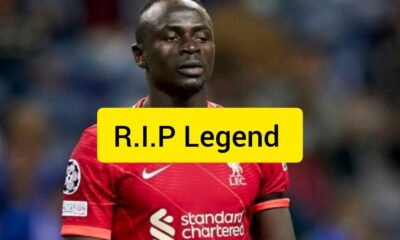
 Liverpool2 years ago
Liverpool2 years agoSad News Sadio Manè Confirmed Dead Today By Sky Sports Reporters, Open For Full Story 👇
-
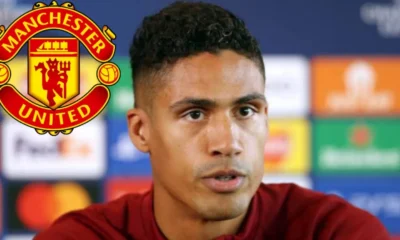
 Blog1 year ago
Blog1 year ago“I was forcefully removed from Manchester United squad and now I’ve joined the best team in the world…I will revenge and as a result, I’ve ordered my friend who’s their best player currently to leave there with immediate effect and he has agreed”: Former Man United player angered by United decision to removed him from the squad as he ordered the Club’s best player to leave immediately.
-

 Blog1 year ago
Blog1 year agoSad News: Manchester United player died when playing for his country England yesterday 😢 😔
-

 Blog2 years ago
Blog2 years agoR.I.P: Formal Real Madrid and France international confirm death this morning
-

 Chelsea2 years ago
Chelsea2 years agoBreaking New:”Roman Abramovich could get Chelsea back”? Chelsea owner review the conversation between him and Roman Abramovich in. Deal about getting Chelsea back
-

 Blog2 years ago
Blog2 years agoUNBELIEVABLE: Manchester City midfielder KELVIN DE BRUYNE divorced wife this morning after DNA test revealed their 5 years old son belongs to formal Manchester United player
-
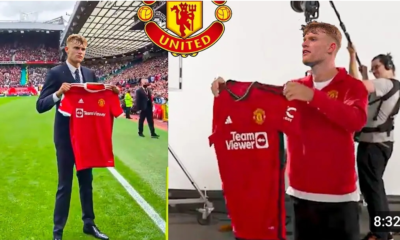
 Manchester United1 year ago
Manchester United1 year agoOFFICIAL NOW: Manchester United announce the signing of 23yr sensational player after beating Liverpool and Madrid for His signature, agreement reached on a 5yr deal, Medical completed – announcement ongoing



